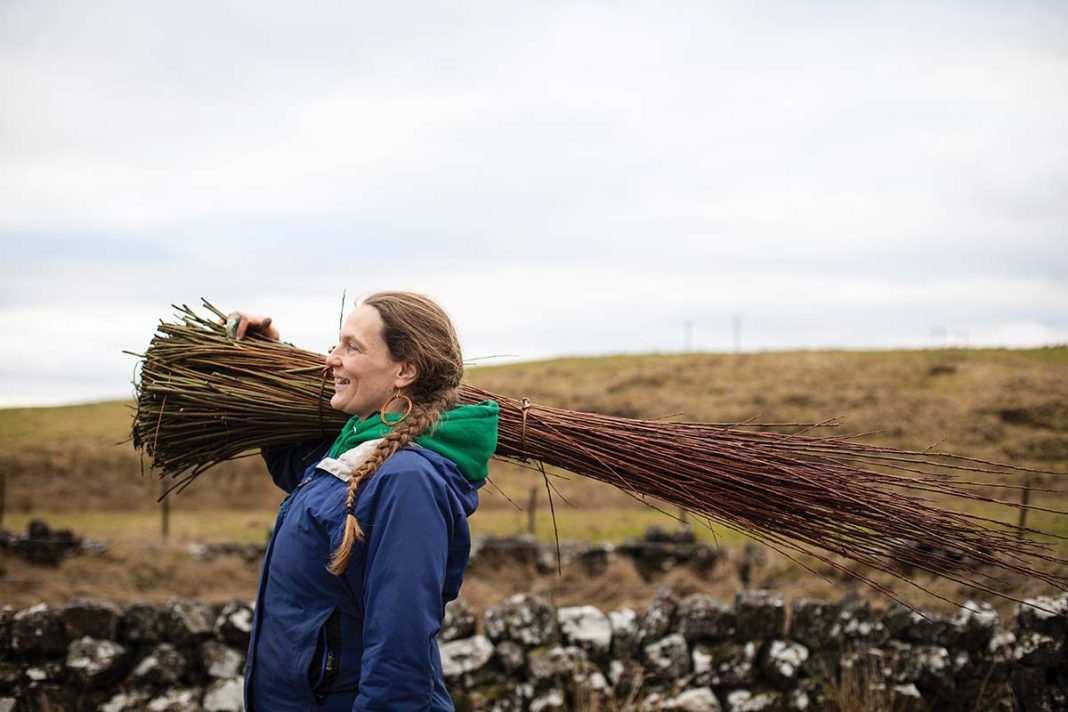By the Edinburgh coast, Anna Liebmann weaves baskets out of willow she’s grown, cropped and prepped – all with her own hands. Here, she shares about sustainability community and what prompted her to start weaving
Being physically fit and well is very important to me. My body is my job and I find that if I’m not active, I get very down. But basketmaking in my shed can be isolating – I’d be happier as part of a team. So finding ways of being with people is important. The basketmaking community is very supportive, though.
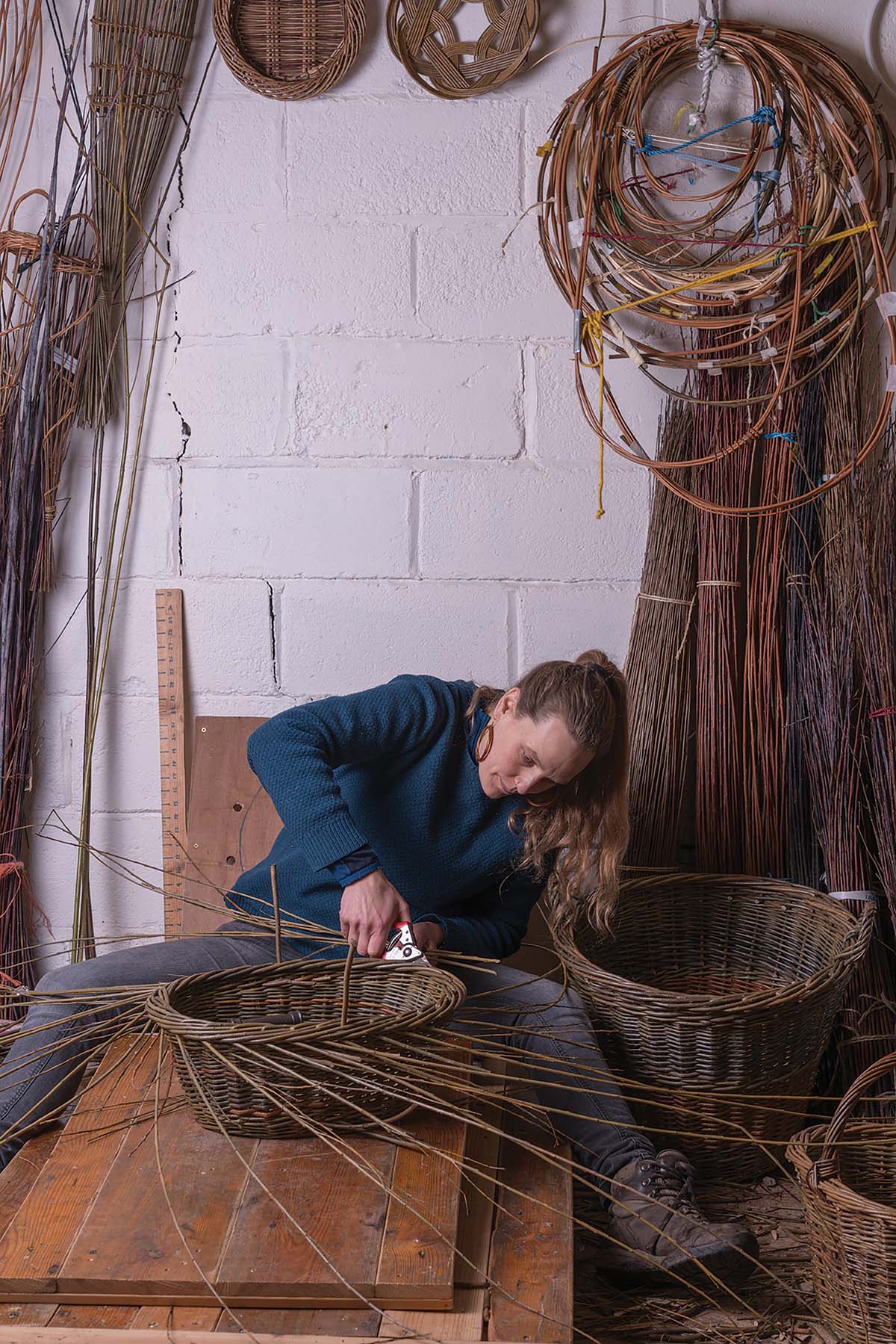
Wellness, to me, means being fit, engaged, inspired and feeling what you are doing is having a positive impact on other people or the environment and that you are appreciated for it.
I grew up in Bristol and have always liked being outdoors and doing practical things. My mum and dad took me on lots of walks (which I hated at the time) and my dad had an allotment where we grew our veg.
I always loved taking things apart and putting them back together, finding out how they worked. But it wasn’t until I moved to Scotland to live and campaign at Faslane Peace Camp that things got really hands-on. If something needed fixing, you did it yourself, leading me to learn all kinds of practical skills, including plumbing.
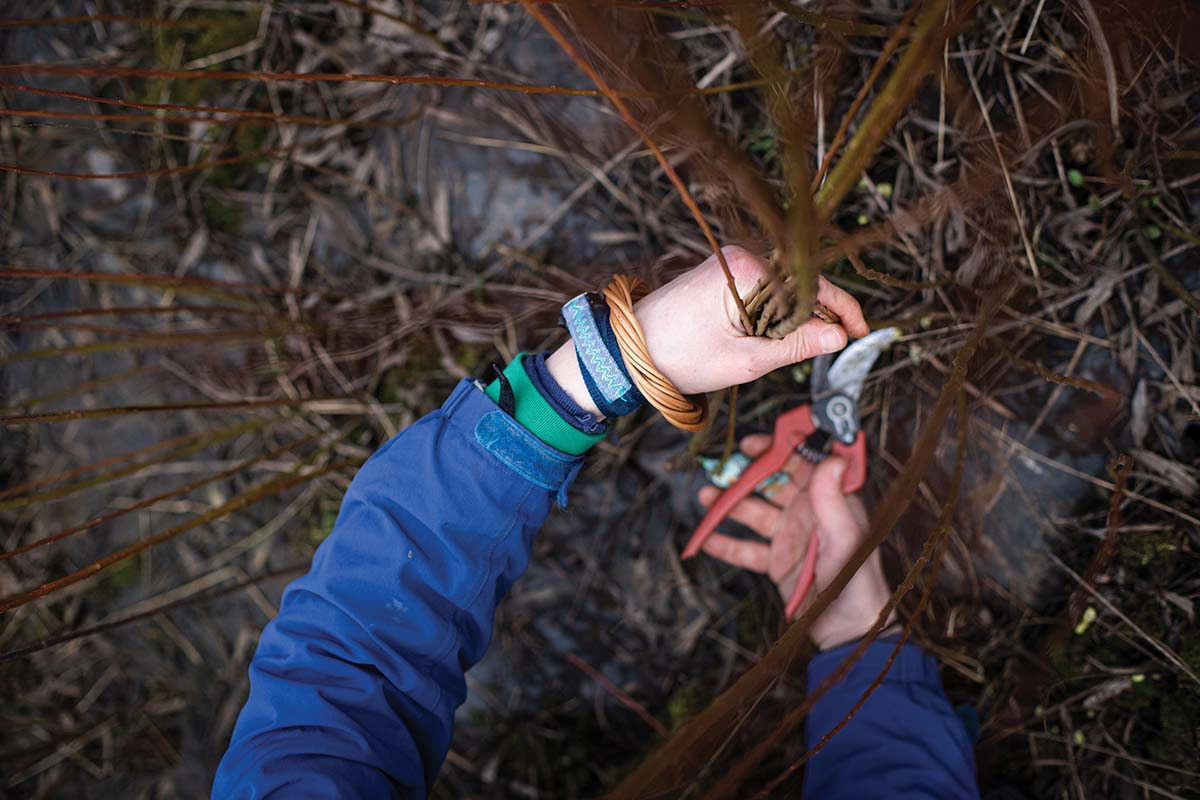
I got into basketmaking through growing willow. I was inspired by its zero-carbon footprint; I could make something with just the secateurs in my hand and a walk to the field.
I lived in a sustainability-focused community in south-west Scotland, and we planted lots of native trees, along with willow for wildlife habitat creation, shelter belts and a dedicated basketry willow patch.
A few things conspired to make me learn to make a basket: I had tiny children and wanted a beautiful basket for their toys, and my previous passion for metalworking didn’t go very well with bringing up kids.
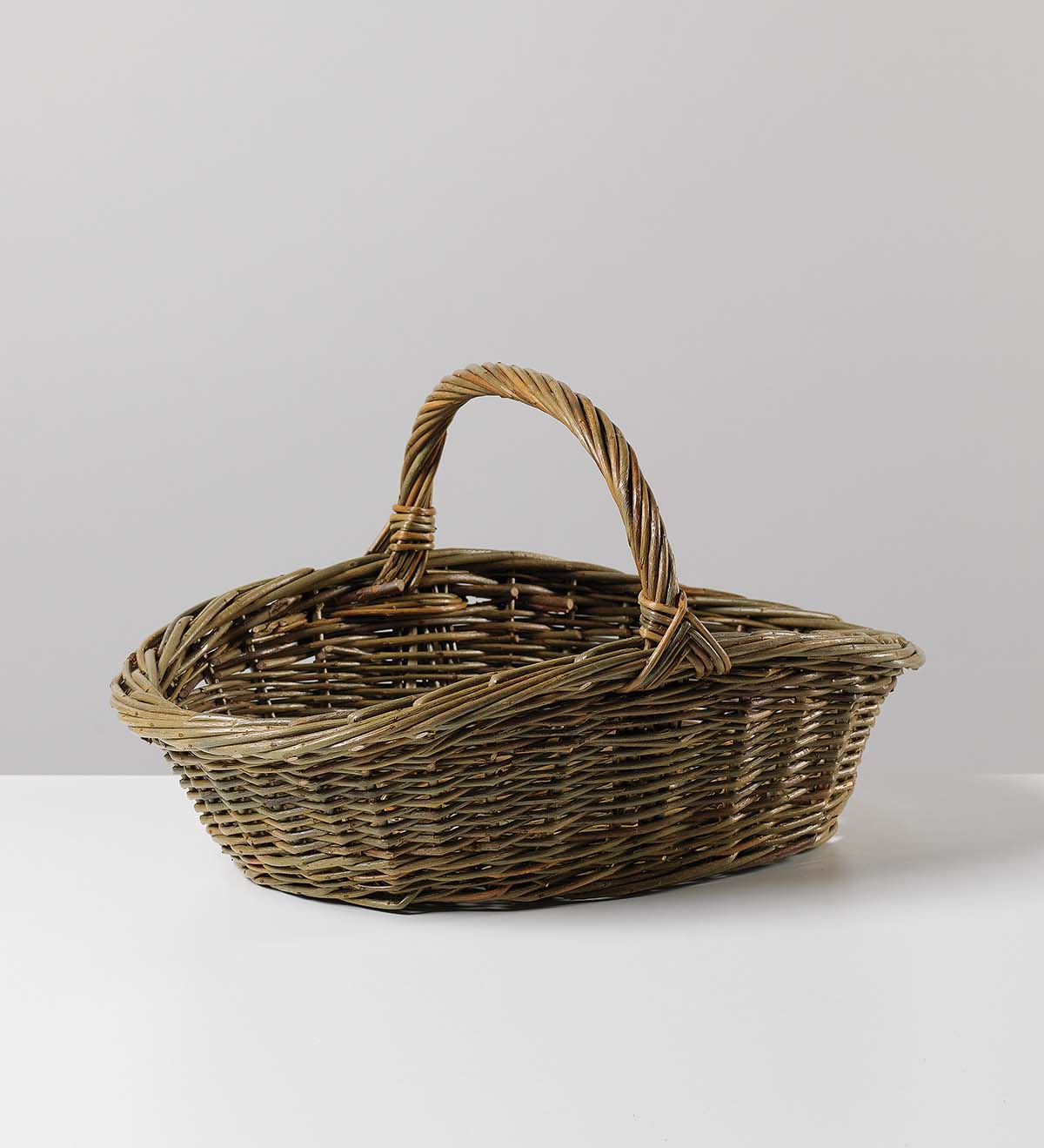
After taking a one-day course, I practised and practised, and having the raw material to hand was instrumental in this. Over the years I’ve been on various courses, many organised by the Scottish Basketmakers’ Circle, but the fundamentals are to practise as much as you can. More recently, I’ve been awarded funding for more focused training which has really developed my skills.
If I’m working with stripped willow, I’ll put it in my soaking tank first thing in the morning, then take it out to mellow while I have my breakfast. Willow with its bark on takes a lot longer to prepare but once it’s ready, it will stay flexible for a week or so. I always aim to work in batches for smaller things (garlic baskets, platters, stars) as it’s much more efficient, but log baskets, laundry baskets, even shoppers take much longer to make.
I sell work online and at Stockbridge Market and at farmer’s markets in town. There is also always willow to sort and put in the tank for future use (especially important for teaching).
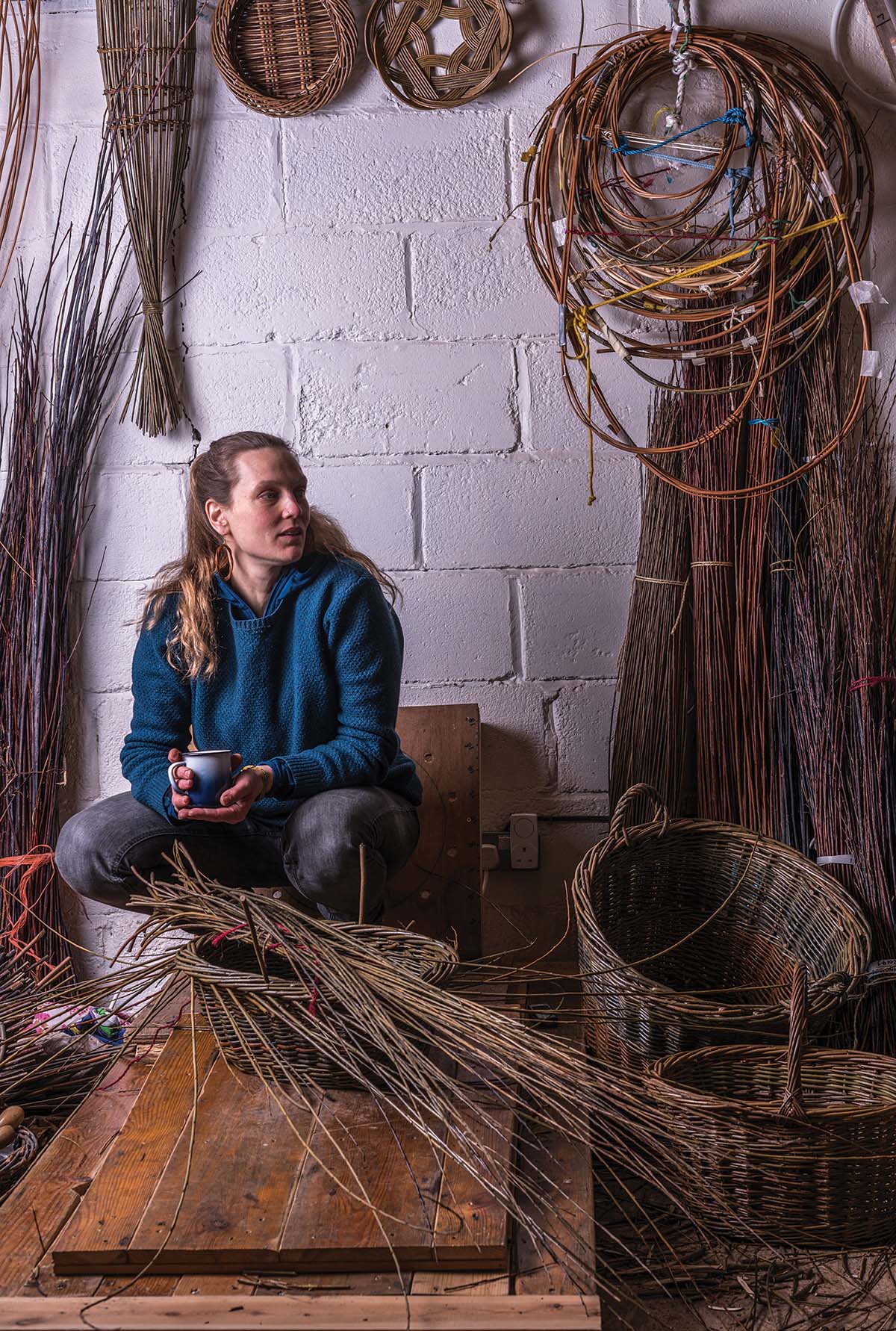
I live right by the sea in Edinburgh and students love it when they come here – I teach small groups from my studio for one week each month.
Once a year, there is my willow harvest to organise and cut. This is in south-west Scotland, although I am starting a new patch in Edinburgh at the Lauriston Farm Agro-Ecology
project.
After harvesting and bringing in, the willow needs grading by length before rebundling and putting away for next year. With my own harvest, the willow takes a whole load of space in the garden, from about February until May; beautiful and colourful and fresh, but then it needs grading into lengths.
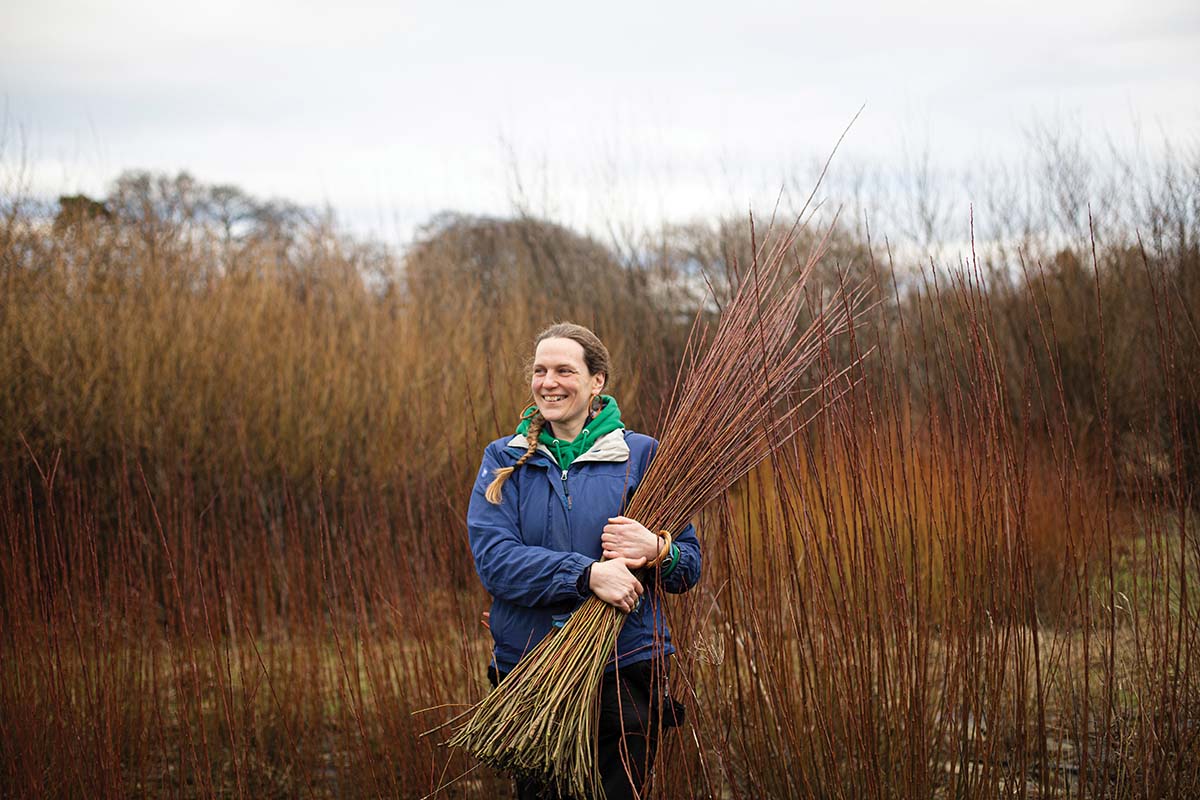
From there, it is sorted even more, by width, prior to soaking, and then it’s ready to
weave. Weaving is very physical, with one basket being akin to a yoga session, if you were to watch it speeded up.
How we spend our days is how we spend our lives, so making each one a truthful reflection of our beliefs and goals matters to me.


